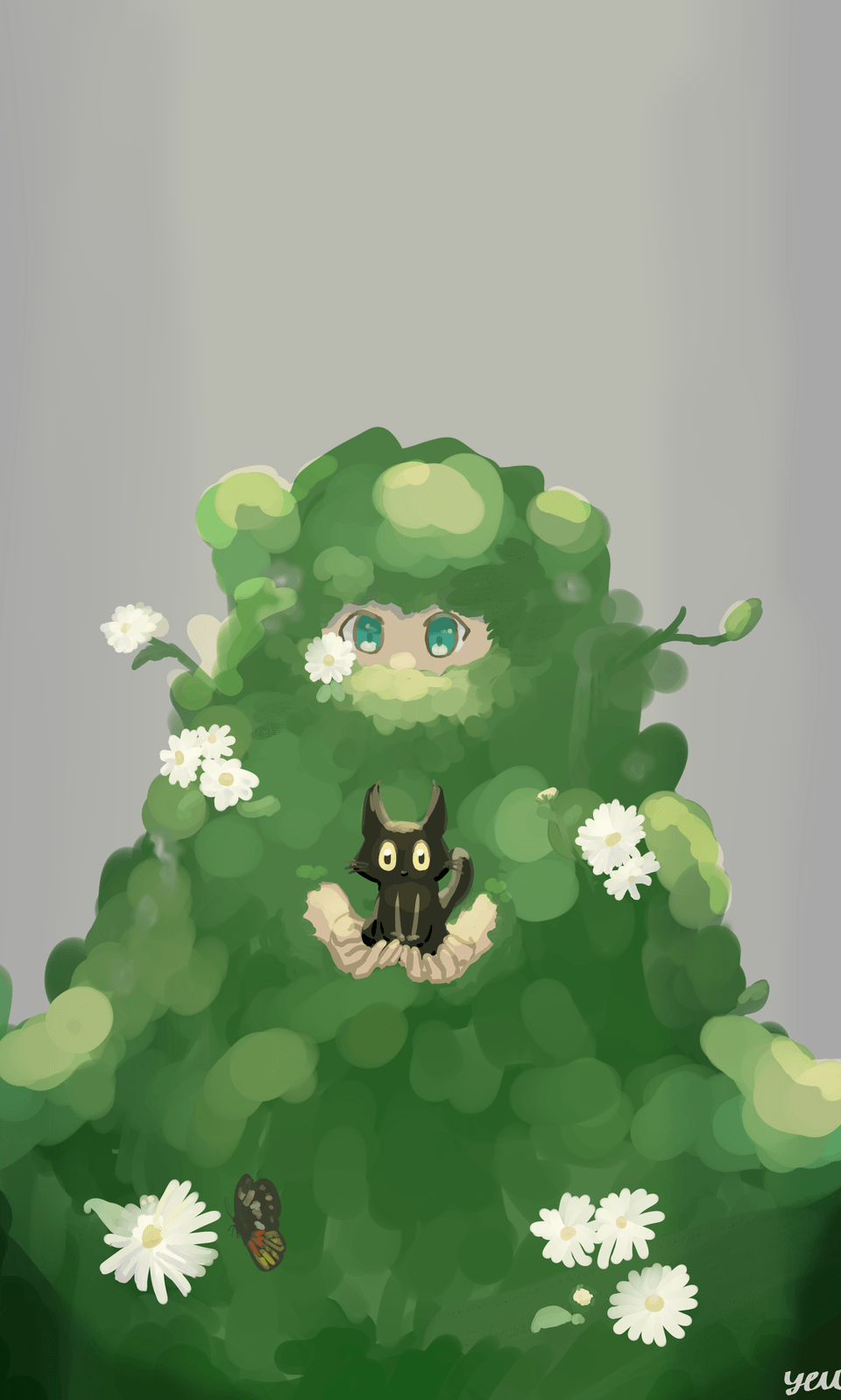Mastering Leg and Foot
Drawing legs isn’t so bad, but I used to think of drawing foot as a nightmare and do everything in my power so I don’t have to do it.
Knowing how to simplify and get used to the shape of both legs and feet helps tremendously. This tutorial will cover everything from simplified leg and foot shapes, the muscles, differences between the sexes and ages, posing tips to step-by-step drawing.
Let’s master legs and feet!
There's also a video version of this tutorial:
Disclaimer: the anatomy in this tutorial is simplified for drawing purposes.
Leg Basics
Artistically, an ideal human figure is eight heads tall with legs a bit more than half body length. If you’re going for a more realistic approach, make the figure seven heads tall with the legs around half the body or less.
The thigh and lower leg are of the same length. The measurement for the upper leg started from slightly above the groin area. The calf makes up about two third of the lower leg.
By the way, legs aren’t “straight” when seen from the side. The lower leg is a bit angled and the knee’s rounded shape a bit prominent.
Leg has a ton of muscles and certain movements cause muscles to contract. If you’re familiar with leg workouts, you might have known which movement uses what muscles.
We can improve how the legs look in certain poses by knowing which muscles contract and which don’t.
I think the best reference to get used to leg muscles is bodybuilders. The size of their muscles and how they flex makes the shape of the muscles real easy to see.
When the muscles are relaxed, it could change shapes to a certain degree. Imagine putting a pressure on the top of a square object and it puffs horizontally.
Legs are the same way. Certain poses can put pressure on some leg parts and change its shape a bit. If you draw poses where parts of the leg are pressed against something, flatten it vertically and puff the sides.
Drawing knee can be a bit tricky. Instead of disc shaped, knee is an oval thanks to the muscles and bones connected to the knee itself.
Imagine the bones and the kneecap when drawing and leave little to no gap between them and the skin. Knee is supposed to be bony.
For line art, you can emphasize the knee shape by adding a small curve next to the knee’s “oval” shape.
From behind, the knee part is diamond shaped because of the surrounding muscles.
Leg Varieties
Muscle size and fat percentage plays a role in how legs look. The lower the fat percentage and the bigger the muscles, the more defined the leg shape would be. The greatest changes can be seen on the thigh and calf, while the knee and ankle don’t change much.
Other than muscles, there are differences between the legs of both sexes. Male pelvis is taller and female wider. Female thigh bone is more angled compared to male. This difference is apparent in teens and adult.
Because of the pelvis differences, male hip and rear would look like a square while the female ones would look like an upside down heart. Female knees also face a bit inward compared to the male ones.
The rear differences also apparent in side view.
Legs of Different Ages
Children’s legs proportions are a bit different from adults. You can see the legs of different ages below.
The key to draw legs of different ages is the ratio of the foot and knee size compared to the legs’ length. Using the knee size as the measurement unit to measure the lower leg (excluding the knee and ankle) you can see the proportion differences between different ages.
With the correct proportions, you won’t mix up adult, teen and child legs no matter the illustration size.
Baby legs are the most different one. Babies are bowlegged, meaning their legs are curved outwards and will straightened out as they grow up. Other than that, baby’s legs and feet contains a lot of fat.
The fat covers the knee and ankle, making the bones shape not visible. Also, the fat caused the legs to “puff” and there will be creases especially around the joints.
Foot Basics
There’s correlation between foot size and height, especially in males after puberty. The ratio of foot size to height is approximately 1:6.6.
If we use eight heads tall figure from before, we divide 8 by 6.6 and get 1.2 as the foot size.
Once again, it’s true for males. Tried and tested in real life by me and friends, men and women of the same height have different foot sizes. Men’s feet are bigger.
Women’s foot size to height ratio I prefer is one to eight at minimum.
If we use an eight heads tall female figure, it means the foot size is equal to the head. With this ratio, a woman’s foot is about a quarter of the leg’s total height from ankle to hip.
1:8 ratio works for children’s feet, too.
The foot can be simplified into five parts. This simplification highlights the overall shape of the foot and its movements; especially works well when you’re drawing shoes or socks.
The parts are:
1. Ankle.
2. Heel.
3. Bridge and arc.
4. Ball of the foot.
5. Toes.
The ankle has two pointed parts. The inner one is higher than the outside.
For children, the bones look bigger and pop out more than adult’s.
Next, the bridge of the foot isn’t flat. There’s a raised triangle area from the ankle to the big toe.
This impacts how we shade the foot.
The sole isn’t flat either. If you see the simplified image of a human footprint, you might find a familiar curve below the big toe. It’s a slightly raised part of the sole called the arc.
The overall shape of the sole doesn’t resemble a rectangle. It’s more of a trapezium or an inverted triangle.
Toes are arranged in a slight curve. The big toe has one joint while the rest of the toes have two.
For toes other than the big toe, there’s a slightly raised area just before the nail. Little toe is a bit bend and round, unlike the rest.
Feet have knuckles like hand, but it’s less obvious. You can see it above the ball of the foot if you clench the toes.
In some cases, you can also see the tendon connecting the toes to the foot. The tendon for the big toe and the tendon for the four toes are separate as you can see in the picture below.
Baby’s foot, just like the leg, has a lot of fat—meaning the shape of the foot is less pronounced. The toes are often curled up.
Posing Tips
When posing the legs aesthetically, there are things that can make legs look more appealing.
Asymmetry grabs more attention than symmetry because it looks more dynamic. Instead of standing straight, bend one leg or move it in front or behind the other.
Same goes with sitting. Try making the pelvis, the knees and the ankles cannot be connected into one straight line. Tilt the knees to one side while the ankles positioned on the opposite side. You can also keep either the knees or the ankles apart. Or keep both apart.
In illustrations where only part of the legs appeared, don’t cut off the legs at the joints. Cut off the legs either mid-thigh or mid lower leg. Cutting off the legs at the joints is awkward looking at best or making the legs look like it’s been chopped off at worst.
Drawing Legs
Note: These steps is focused on the drawing process and will skip explaining what the previous chapters has covered.
I usually start drawing the legs with stick figure. Separate the legs into seven parts:
1. Pelvis.
2. Hip joint.
3. Thigh.
4. Knee.
5. Lower leg.
6. Ankle.
7. Foot.
After drawing the stick figure, draw simple geometric shapes. Then, using the muscle knowledge from before, finish drawing the legs.
As long as you get the muscles and leg parts down, the process of drawing legs is straightforward.
You can watch the timelapse here.

Drawing Feet
When drawing a foot, I like to simplify it using a triangle and draw the toe direction if needed. Then, draw the geometric shapes with the sole sketched even in angles where the sole isn't visible.
The key of drawing a foot is the sole, even in angles where you cant see it (except for side view). The sole gives you information about the movement of the foot parts and the angle.
For the ones with the sole visible, split the sole into two. Then draw the heel and ball of the foot round and puffed, making it looks like a pad. Then draw a C shape for the arc. Next up, separate the toe parts into two: the big toe and the rest.
Then outline the foot. Make the sole part curvy, lower at the heel and the ball of the foot while a bit higher at the arc. Also draw the ankle and leg if they’re depicted.
The feet part is done.
Here's the timelapse:

Next up is the toes. Let’s resize it for a bit.
We have divided the toe parts into two. If more than one toe aside from big toe are visible, sketch those toes. You can mark the joints with curves to make the shape clearer.
Outline the toes and draw the nails if visible.
The toes are done!
Toes timelapse:

Attach the toes to the feet (adjustments was done). The feet is done!
Outro
Thanks for reading until the very end! I hope this tutorial helps you in mastering both legs and bare feet.
Let me know what you think about this tutorial in the comments!
























Comentario